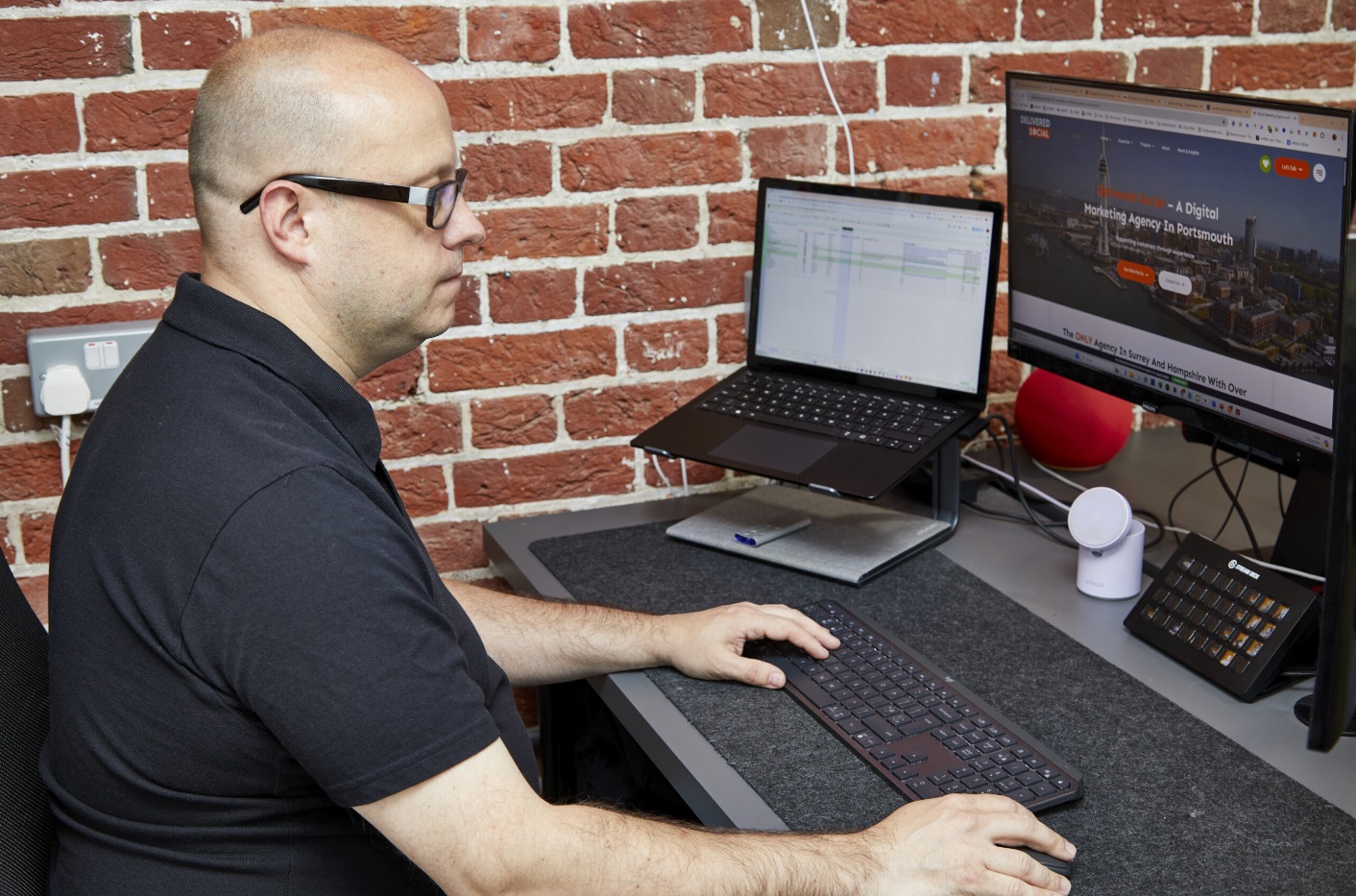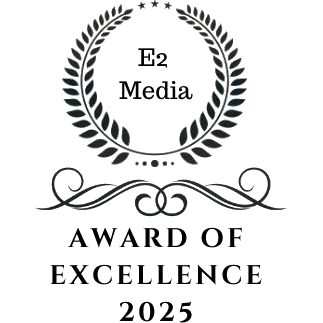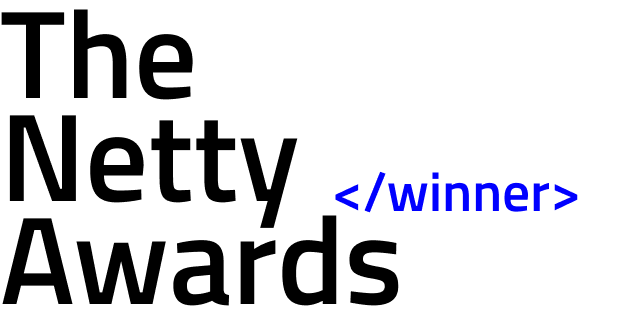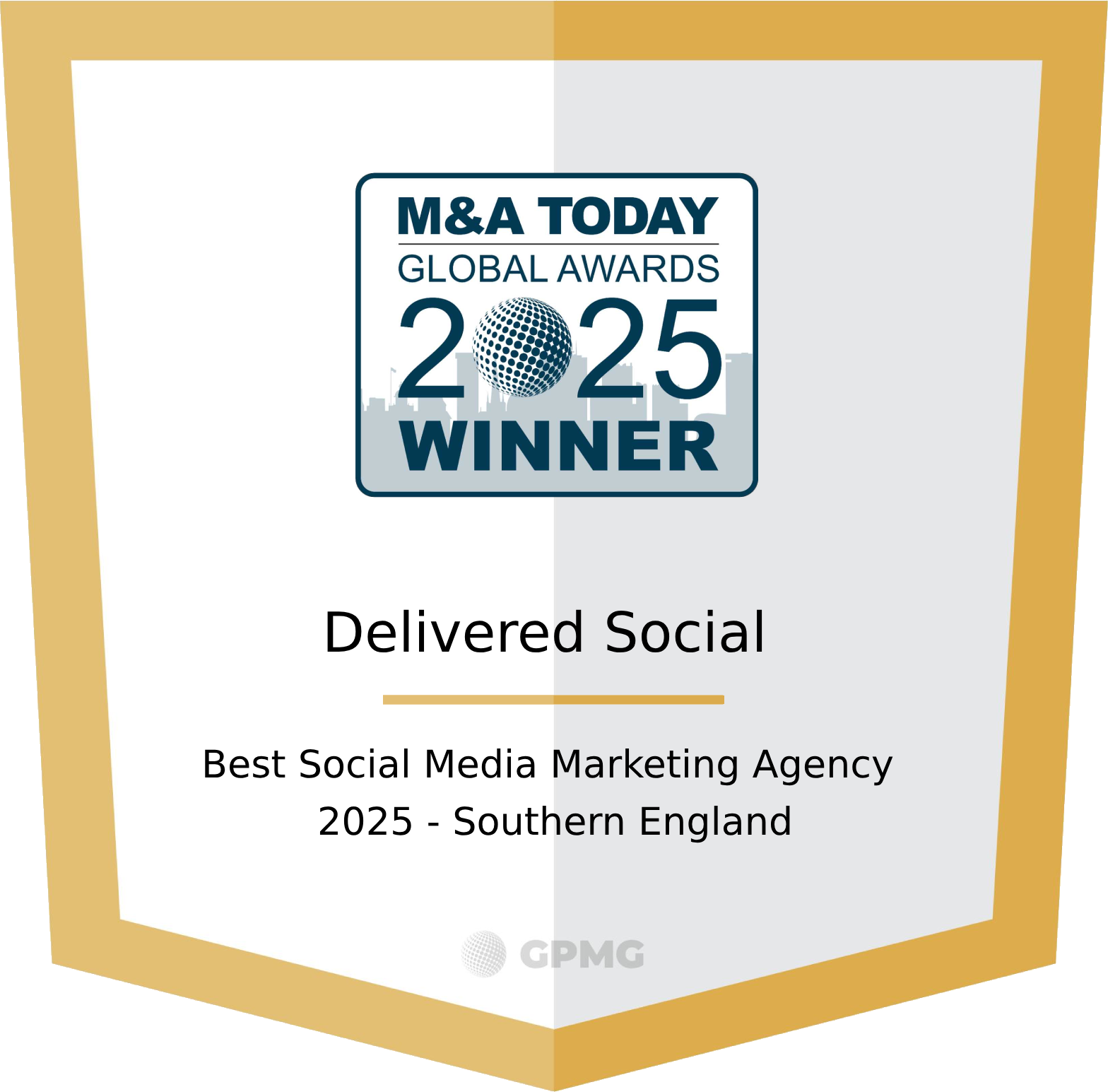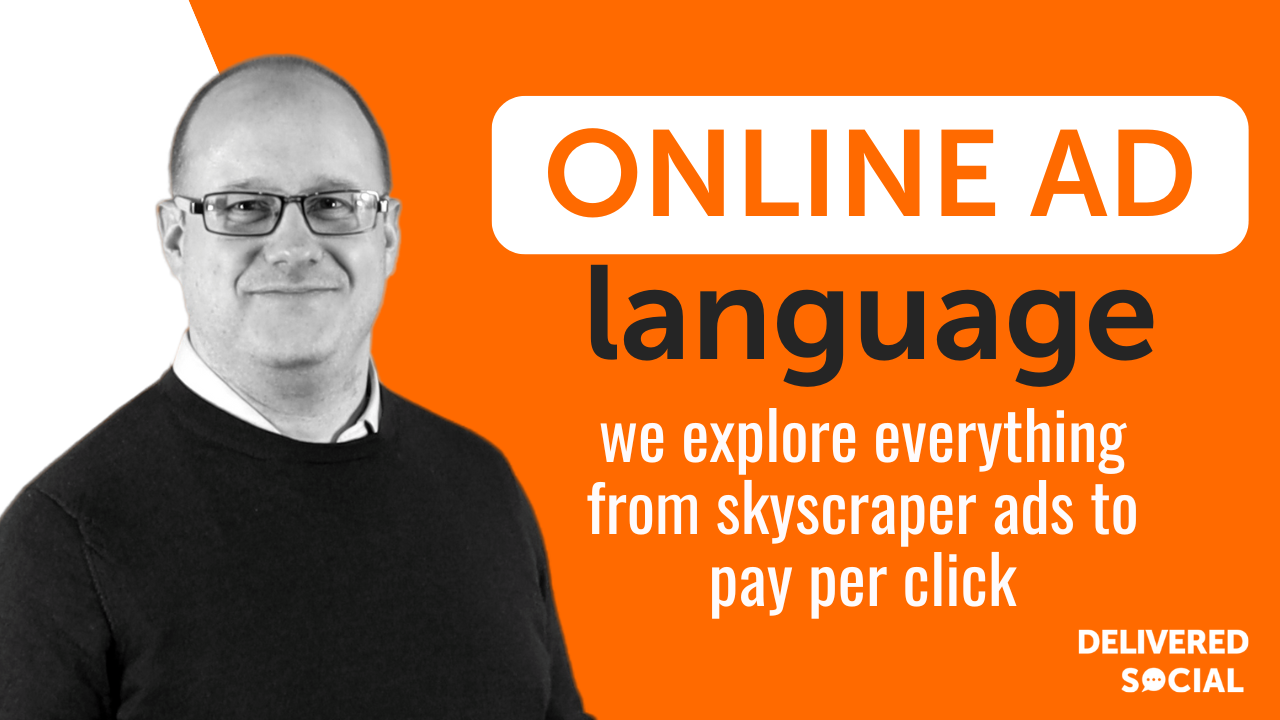
As you venture into online marketing, you’ll encounter specific terminology unique to digital advertising. Here’s an in-depth explanation of some key terms, with a focus on skyscraper advertising, what it is and how it works.
Ad Blindness
This occurs when users become so accustomed to ads that they stop noticing them, even if they are actively searching for related information. Ad blindness is a significant challenge for advertisers as it directly impacts the effectiveness of ad campaigns.
Click Through Rate (CTR)
This is the percentage of users who click on an ad compared to the total number of users who viewed it. It’s often low due to ad blindness, but it is a crucial metric for understanding the performance of online ads. A high CTR indicates that the ad is engaging and relevant to the audience.
Ad Network
An ad network is a company that buys and sells ad space across various websites. This allows advertisers to reach broader audiences while offering options to target or exclude specific sites. Examples of ad networks include Google AdSense and Media.net.
Google AdWords
Google AdWords is a platform by Google that places text ads on search engine results pages and partner websites. It uses a pay-per-click (PPC) model, where advertisers bid on keywords and pay each time a user clicks on their ad. This can be quite expensive depending on the sector and thus requires considerable spend.
Banner Ad
A banner ad is a horizontal ad space, usually spanning the width of the webpage. Banner ads can be static images, animated graphics, or even interactive elements. They are designed to attract the viewer’s attention and drive traffic to the advertiser’s website.
Below the Fold
Below the Fold refers to the portion of a webpage that is not immediately visible to users when they first load the page and requires scrolling to be seen. The term originates from print newspapers, where the most important news was placed above the fold of the paper, visible at a glance. In digital advertising, content or ads placed below the fold may receive less attention and engagement compared to those above the fold, as they are not immediately visible to users.
Placement of content above or below the fold can significantly impact user engagement and ad effectiveness. Ads placed above the fold are seen immediately when the page loads, leading to higher visibility and potentially better engagement rates. Conversely, ads below the fold may require additional effort from users to scroll down, potentially reducing their exposure and interaction rates.
Button
A button is a small, typically square, clickable ad or link. Buttons are often used for calls to action, encouraging users to take specific actions such as downloading an app or signing up for a newsletter.
Cookies
Cookies are browser-stored data that track user behaviour and preferences, enabling ad networks to serve relevant ads based on browsing history. Cookies help advertisers personalise their marketing efforts, making ads more relevant to individual users.
Cost Per Mille (CPM)
The cost per 1,000 ad impressions. It’s a metric for pricing display ads, contrasting with pay-per-click models. CPM is widely used in online advertising to measure the cost-effectiveness of an ad campaign.
Display Advertising
Display advertising is a broad category encompassing various online ad formats, including banners, videos, and text ads. Display ads can appear on websites, social media platforms, and mobile apps.
Flash
Adobe’s software for creating interactive and animated web content is commonly used in ads. Although Flash is being phased out in favour of HTML5, it was once a popular choice for creating engaging multimedia ads.
Message Plus Unit (MPU)
An MPU is a square ad slot that can host multimedia content like videos. MPUs are versatile and can be used to display rich media ads, which often result in higher engagement rates compared to standard display ads.
Pop Up
Pop-ups are ads or other content that appear in a new window or overlay, often used to capture attention immediately. While they can effectively generate leads, they are also often seen as intrusive and can lead to a negative user experience.
Pay Per Click (PPC)
A model where advertisers pay each time a user clicks on their ad. PPC is a common model used in search engine advertising and social media marketing. It allows advertisers to control their budget and target specific keywords or audiences.
Pay Per View (PPV) Advertising
Pay-per-view (PPV) is an advertising model in which advertisers pay for each ad impression, regardless of user interaction. This model contrasts with Pay-per-Click (PPC), where advertisers only pay when a user clicks on the ad. PPV is commonly used in display and video advertising to maximise visibility and reach a wide audience.
How PPV Works
In PPV advertising, the advertiser pays a fee each time their ad is displayed to a user. This fee is often measured in Cost Per Mille (CPM), representing the cost per 1,000 impressions. For example, if the CPM rate is £5, the advertiser pays £5 for every 1,000 times their ad is shown.
Advantages of PPV
- Increased Visibility: PPV ensures that ads are seen by a large audience, making it ideal for brand awareness campaigns.
- Predictable Costs: Advertisers can estimate their costs more accurately based on the number of impressions they expect to receive.
- Broad Reach: PPV campaigns can reach a wide range of users across different websites and platforms, increasing the potential for brand exposure.
Challenges of PPV
- Lower Engagement: Since advertisers pay for impressions rather than clicks, there may be lower user engagement compared to PPC campaigns.
- Ad Blindness: Frequent exposure to the same ads can lead to ad blindness, where users start ignoring the ads over time.
- Effectiveness Measurement: Measuring the effectiveness of PPV campaigns can be challenging, as impressions do not directly correlate with user actions like clicks or conversions.
Return on Investment (ROI)
ROI measures the profitability of advertising campaigns, typically calculated in terms of sales or profit relative to advertising spend. High ROI indicates a successful campaign that generates more revenue than it costs. We’ll talk about retargeting a little later on and the benefits of using Skyscraper Ads for a very effective return on investment.
Search Engine Optimisation (SEO)
SEO involves strategies to enhance a website’s visibility on search engine results pages, driving organic traffic. Effective SEO practices include keyword optimisation, quality content creation, and improving site architecture. Delivered Social specialises in effective SEO – we’d love to talk to you about getting your website up those all-important rankings.
Skyscraper Ads
A tall, vertical ad is often positioned along the side of a webpage. Skyscraper advertising is particularly effective for creating a strong visual impact and ensuring the ad remains visible as users scroll down the page. It is primarily used on Desktops where there is more ‘space’ to feature and is considered best practice when retargeting your visitors around the web.
Skyscraper Advertising is a powerful tool in the digital marketer’s arsenal, offering high visibility and the ability to engage users with rich media content. Despite challenges such as ad blindness and the need for high-quality creative, the benefits of skyscraper advertising make it an effective choice for branding and awareness campaigns. By adhering to best practices and staying abreast of future trends, advertisers can maximise the impact of their skyscraper ads and drive meaningful results for their campaigns.
Below, you’ll see some fantastic examples of Skyscraper Banner Ads that feature Harry’s, Freshdesk and Glassdoor, all with very clear messaging and calls to action.

As the digital landscape continues to evolve, skyscraper banners will undoubtedly remain a key component of successful online advertising strategies.
Rich Media Integration
One of the key benefits of skyscraper advertising is its ability to integrate rich media elements such as videos, animations, and interactive features. This enhances user engagement and provides a more immersive advertising experience compared to static ads.
Persistent Visibility
Unlike traditional banner ads that may disappear as users scroll, skyscraper ads remain visible for a longer duration, increasing the likelihood of user interaction. This persistent visibility makes them an attractive option for advertisers looking to maximise their reach.
Challenges and Considerations
While skyscraper advertising offers numerous benefits, it also comes with certain challenges. These include potential ad blindness, the need for high-quality creative content, and the requirement for proper placement to ensure maximum effectiveness.
Ad Blindness
Even with their prominent placement, skyscraper banners are not immune to ad blindness. Users may become accustomed to their presence and start ignoring them, reducing their effectiveness over time.
Creative Quality
To capture and retain user attention, skyscraper ads must feature high-quality creative content. This includes eye-catching designs, compelling messages, and engaging interactive elements. Poorly designed ads can lead to negative user experiences and lower engagement rates.
Placement Strategy
Effective skyscraper advertising requires strategic placement on high-traffic websites that attract the target audience. Advertisers must carefully select websites and pages that align with their campaign goals to ensure optimal performance.
Best Practices for Skyscraper Advertising
To maximise the effectiveness of skyscraper advertising, consider the following best practices:
Targeting and Personalisation
Leverage cookies and data analytics to target specific audience segments with personalised ads. Personalised ads are more likely to resonate with users and drive higher engagement rates.
A/B Testing
Conduct A/B testing to determine which ad creatives and placements perform best. Testing different variations of ads can provide valuable insights into what works and what doesn’t, allowing for continuous optimisation.
Engaging Content
Invest in high-quality, engaging content that captures user attention. Use rich media elements such as videos and interactive features to enhance the user experience and encourage interaction.
Mobile Optimisation
Ensure that skyscraper advertss are optimised for mobile devices. With the increasing use of smartphones for browsing, it’s essential that ads are responsive and provide a seamless experience across all devices.
Analytics and Tracking
Utilise analytics tools to track the performance of skyscraper ads. Monitor key metrics such as CTR, conversion rates, and ROI to assess the effectiveness of campaigns and make data-driven decisions for future optimisations. You may be surprised to see that one banner strongly outperforms another.
Future Trends in Skyscraper Advertising
As technology evolves, skyscraper advertising is likely to undergo significant changes. Here are some future trends to watch:
Programmatic Advertising
Programmatic advertising uses automated systems to buy and place ads in real time, allowing for more efficient and targeted ad placements. This technology is expected to play a crucial role in the future of skyscraper advertising.
Artificial Intelligence (AI)
AI can enhance skyscraper advertising by providing advanced targeting capabilities and improving ad personalisation. AI-driven algorithms can analyse user data to deliver highly relevant ads that are more likely to engage users.
Augmented Reality (AR)
AR technology offers exciting possibilities for skyscraper ads, allowing advertisers to create immersive experiences that blend digital content with the real world. AR ads can engage users in innovative ways, making them a powerful tool for marketers.
Sustainability
As consumers become more environmentally conscious, there is a growing demand for sustainable advertising practices. Advertisers may need to consider the environmental impact of their campaigns and adopt eco-friendly practices in their skyscraper advertising strategies.
Interested In Working Together?
Introducing Delivered Social. We’re The Most-Rated Digital Agency In Surrey & Hampshire – We’ve Got To Be Doing Something Right.
Delivered Social is a digital marketing agency with one mission—to help businesses grow. We’re famous in Guildford and Portsmouth for our social clinics. We believe in free advice. We build lasting relationships because our team prides itself on being helpful, which our clients appreciate.
If you are looking for a new website or an agency to manage your social media presence, we can help.
If you need something slightly different, here's a super handy list of all our services, or you can always email us.


